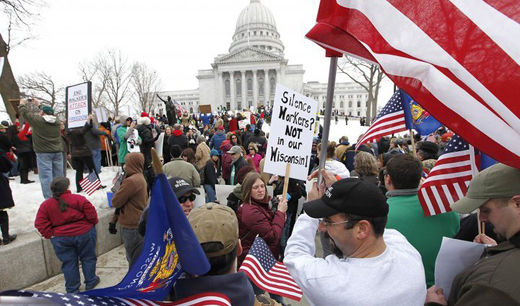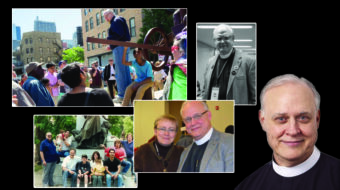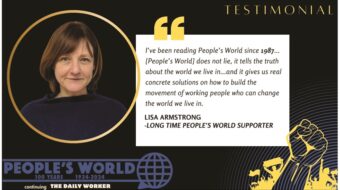
The class struggle is in the news. “Class Conflict Very Strong,” says a CNN headline. “Harder for Americans to Rise from Lower Rungs” headlines a New York Times story.
Recent opinion polls make no bones about it: a Great Class Wall divides America.
To say that people are pretty upset is an understatement.
A full 66 percent mark the conflict between the rich and the rest of the country as “very strong” according to a new Pew poll.
The number of Americans with this perception jumped almost 20 percent since the last poll in 2009.
Awareness of this “very strong” class divide spans the political spectrum with 73 percent of Democrats and even a majority (53 percent) of Republicans expressing this view.
Among young people, African Americans, Latinos and working-class whites generally this class conscious sentiment is at its highest.
For most, however, there’s little surprise here. People of color and workers generally have borne the brunt of the economic crisis, which for many has lasted generations – a truth revealed in yet another survey on the lack of class mobility in the U.S.
The U.S., it turns out, has the lowest class mobility of any industrialized capitalist country – far behind Canada, Denmark and even stodgy old class-conscious Britain.
In the U.S., “42 percent of American men raised in the bottom fifth of incomes stay there as adults” says the Times. On the other side of the class divide, “62 percent of Americans (male and female) raised in the top fifth of incomes stay in the top two-fifths.”
The studies point to a growing immiseration of the working class. According to the Times report, “About 36 percent of Americans raised in the middle fifth move up as adults, while 23 percent stay on the same rung and 41 percent move down, according to Pew research.”
Behind these numbers, of course, is the cruel fact that remaining at the bottom of the economic ladder are millions of minorities and women. Poverty because of color and gender remains an added dimension of class exploitation and a continuing downward tug on the economic prospects of literally hundreds of millions.
The data reflecting the most recent crisis is not yet out – most of the people studied were born before 1970 – so these figures for the black, brown, female and working-class poor are sure to worsen.
But the political and even ideological impact of these statistics is already being felt in the Occupy Wall Street movement, in the working-class revolts against the union-busting GOP administrations in Ohio and Wisconsin and, significantly, in new polls showing a growing support for socialism among the groups most affected.
In polls about socialism Pew says, “Low-income Americans are twice as likely as higher-income Americans to offer a positive assessment of socialism (43 percent among those with incomes under $30,000, 22 percentamong those earning $75,000 or more). Fifty-five percent of African Americans view socialism positively along with 44 percent of Latinos. A majority of young people between 18 and 29 (49 percent to 43 percent) do so as well.
A radicalization process is at work here and it is growing in intensity and breadth. It has its eye on scaling the Great Class Wall.
And let no one mistake it: it has its feet on the ground. And with its vision set on a better, more equal, more democratic, more humane, and yes more socialist America, it may soon become a movement and take flight. And when it does: watch out – it’ll be a game-changer.
Photo: John Bachtell

MOST POPULAR TODAY

High Court essentially bans demonstrations, freedom of assembly in Deep South

Zionist organizations leading campaign to stop ceasefire resolutions in D.C. area

U.S. imperialism’s ‘ironclad’ support for Israel increases fascist danger at home

UN warns that Israel is still blocking humanitarian aid to Gaza







Comments